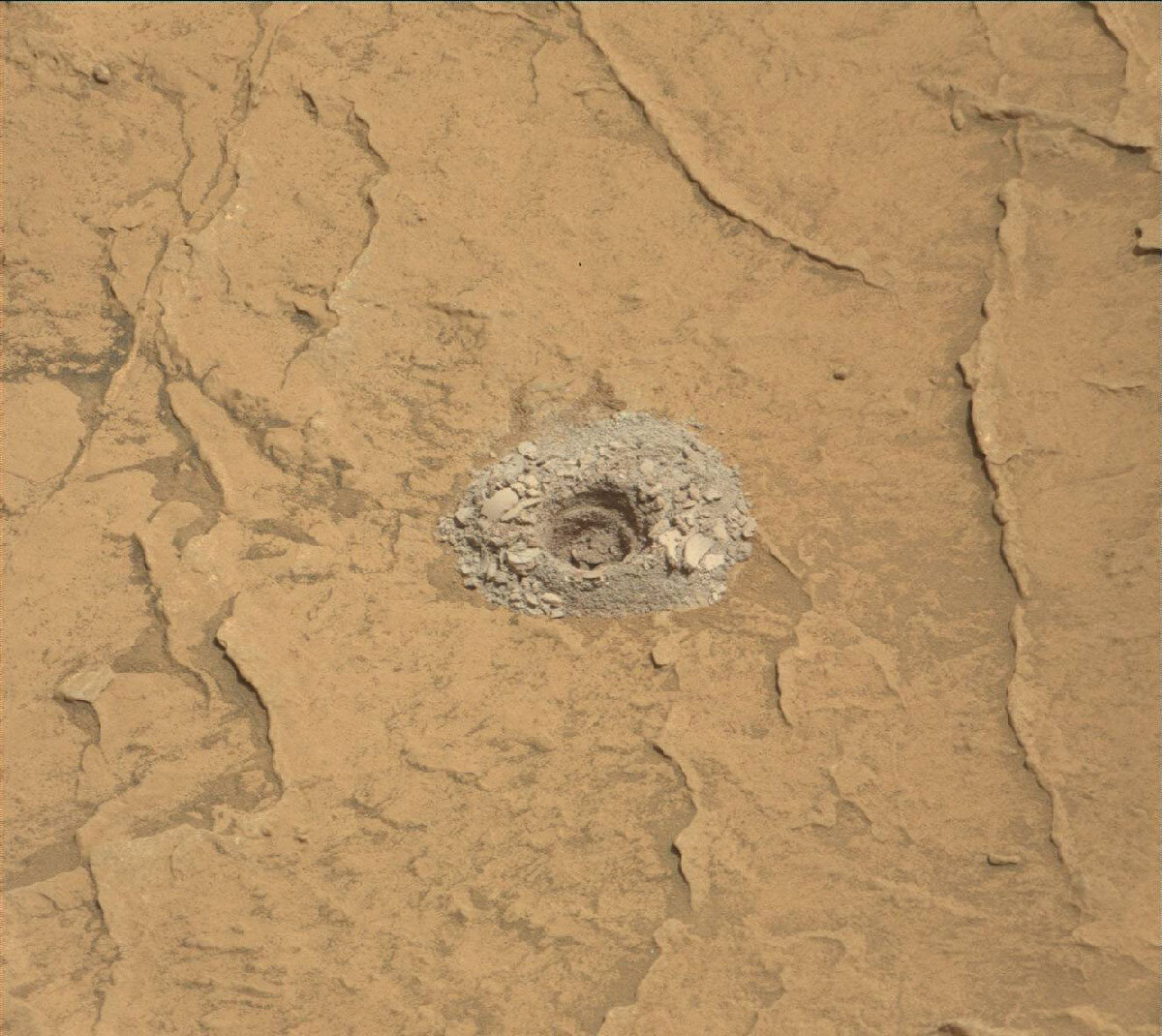3 min read

It is always fun when we begin a planning day and the pre-planned activities get changed. Today was one of those days. The data we were expecting from the previous sol had not arrived at the start of planning, which happens from time to time. We could not be sure that all the previous activities had executed as planned. These activities included the first CheMin mineralogical analysis of the “Bardou” drill sample, the preliminary results of which the SAM team ideally like to see prior to accepting sample to their instrument. While discussing alternative activities for this plan just in case we never received the data, surprise, enough of the data began showing up to allow the original planned drop off to and analysis by SAM to proceed. I am always impressed with how adaptable and capable our team is on a day like this.
As well as the SAM EGA analysis of the Bardou sample, the weekend plan is full of imaging activities utilizing both the ChemCam RMI and Mastcam cameras. Mastcam will acquire mosaics to document a number of sand-filled cracks here on top of Mont Mercou (“Villamblard,” “Queyssac” and “Sabouret”), as well as an image of the Bardou drill hole and surrounding powder. Another of these sand-filled cracks (“Cherval”) will be imaged with the ChemCam RMI.
Parked on top of Mont Mercou gives Curiosity a spectacular vantage point to survey both the terrain we have driven over and future areas of interest. Based on orbital signatures, we are expecting to encounter a transition from relatively clay-rich to sulfate-rich rocks as Curiosity continues to climb Mount Sharp. This may signify an environmental change on Mars, and imaging will help us to monitor this transition and provide context for future exploration. ChemCam will acquire a long distance RMI mosaic pointed towards “Chavagnac,” within the sulfate-bearing unit behind the rover, to the south.
Environmental monitoring will include a Mastcam tau pointed towards the sun at different times of day, Mastcam crater rim extinction imaging to look for dust and Mastcam documentation of the edge of the Mont Mercou cliff. Navcam will also acquire images to monitor dust activity in the atmosphere and to investigate dust devil activity. Standard RAD, REMS and DAN activities are also planned.
As the APXS strategic planning representative today we had no activities. We are excited to analyze the chemistry of the Bardou drilled sample in upcoming plans, before driving away.
Written by Lucy Thompson, Planetary Geologist at University of New Brunswick







